What to know about Undercounter Ice Machines by Joe Szabo, Scottsdale Real Estate Team
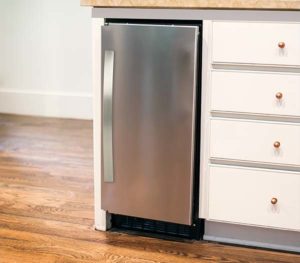 Do you find yourself regularly running out of ice when you have guests over? Stocking up on extra bagged ice is a pain, and those bags will quickly fill up the freezer space you have. Having to supplement the amount of ice your freezer makes is inconvenient and it gets expensive. If it’s a problem you face with any frequency at all, buying a separate ice machine is worth it.
Undercounter ice machines, sometimes called built-in ice machines, are designed to fit seamlessly into your kitchen without taking up any floor space. These are installed directly into your cabinetry, just like a dishwasher or cooking range.
Families that go through ice at a quick pace can buy these machines for their home and integrate them right into their kitchen. Offices, churches, and anywhere else where lots of people are likely to gather and need ice, can also benefit from a built-in ice maker. If the demand for ice is ongoing, such as in a restaurant or hotel, you may be better off with a commercial ice machine that is designed for high-capacity production.
If a built-in ice maker sounds like a good fit for you and your lifestyle, there are a few things you should know before buying one. The below guide will help give you a better idea of the best brands out there, as well as some of the main factors you should consider while browsing your options.
Do you find yourself regularly running out of ice when you have guests over? Stocking up on extra bagged ice is a pain, and those bags will quickly fill up the freezer space you have. Having to supplement the amount of ice your freezer makes is inconvenient and it gets expensive. If it’s a problem you face with any frequency at all, buying a separate ice machine is worth it.
Undercounter ice machines, sometimes called built-in ice machines, are designed to fit seamlessly into your kitchen without taking up any floor space. These are installed directly into your cabinetry, just like a dishwasher or cooking range.
Families that go through ice at a quick pace can buy these machines for their home and integrate them right into their kitchen. Offices, churches, and anywhere else where lots of people are likely to gather and need ice, can also benefit from a built-in ice maker. If the demand for ice is ongoing, such as in a restaurant or hotel, you may be better off with a commercial ice machine that is designed for high-capacity production.
If a built-in ice maker sounds like a good fit for you and your lifestyle, there are a few things you should know before buying one. The below guide will help give you a better idea of the best brands out there, as well as some of the main factors you should consider while browsing your options.
Factors to Consider When Buying an Undercounter Ice Maker
To make sure you end up with the best undercounter ice maker that will meet all of your needs, we would strongly recommend that you consider each of these main factors.Placement
The main reason to pick an undercounter ice maker rather than a portable model is to be able to put it in a spot where it fits nicely within the space. That means, before you get to the point of browsing your options, you should have a place in mind for where you want to install the device. Knowing exactly where it will go allows you to ensure you purchase an ice machine that’s the right size for the space available and that you get the right type. If you’ll be keeping your undercounter ice maker outside, then you need to be careful to choose a model specifically made for outdoor use. Outdoor ice makers need to be more durable and better at keeping the ice cold no matter how extreme the weather may be, so you can’t skimp if you’re wanting an undercounter ice machine for your patio bar or outdoor kitchen.Type of Ice
Do you have a favorite type of ice? You can find built-in ice machines that make nugget ice (what many people refer to as Sonic ice), cube ice, crescent ice or one of a few other types. For some people, as long as it’s cold and keeps your drinks chilled, any ice will do. For those with a particular preference, look for a ice maker that produces the type of ice you like most.Production Rate
An undercounter ice maker’s production rate is a key piece of information in ensuring you get a model that will meet your needs. If your ice maker makes ice at a slower pace than you go through it, then you’ll still end up needing to either supplement with bags of ice from the store or do without ice – which defeats the whole purpose of buying an additional ice maker for your home or business. The manufacturers of built-in ice machines should provide specs on the production rate for each specific model they sell. This rate is going to be based on the quantity of ice the unit can produce within a 24-hour period. The production rate they provide will depend on your ice maker being kept in what they consider the optimal environment, which usually means properly installed, is properly ventilated and the temperature around the machine is kept at approximately 70°F. If your ice maker will be located somewhere that gets hotter than that, you should expect the production rate to fall.Capacity
Undercounter ice makers come with freezer storage space as part of the product. In addition to the production rate, you also need to consider how much ice the machine can hold at a time. If your family or office-mates will frequently go through the ice quickly, then a higher production rate matters more than the storage capacity. If you’re buying an undercounter ice machine to supplement the amount of ice you have for occasional big parties or events, then a high capacity is going to be crucial element for you. If the ice machine you buy doesn’t offer much storage space, but you do have extra storage space elsewhere that you can use to store bags of ice the machine produces, that may work as a partial solution, but it still involves more work. You’ll be more satisfied with a built-in ice maker that stores as much as you’re likely to need at any given time.Size
The tricky thing about getting the right capacity is that how much an undercounter ice maker can hold is directly related to how big it is. If you have limited space to work with, then getting a machine that can store a lot of ice at once and still fit in the space available may be a bit of a challenge. Make sure to measure out the space you plan on installing your built-in ice maker, so you can be sure to get one that will not only fit seamlessly into your kitchen, but also capable of being easy to install.Cost
Undercounter ice makers typically cost somewhere in the range of $250-$5,000. Most of the ice makers on the upper end of that range offer high production rates and a large storage capacity, while the more affordable ones will be smaller in both production and storage. While size and capacity are some of the main factors that influence the overall price, some built-in ice makers will cost more due to having a strong brand reputation or coming with some extra features, such as a water filter or the ability to make nugget ice. In addition to the sticker cost of an ice maker, you should consider the other costs that come with it. Many undercounter ice makers can also be used as freestanding models, if you so choose, but if you do aim to install them under a counter, you may have to spend a little extra during the installation process, either in labor or parts, or both. Creating ice will also require the use of more energy and water. While it won’t be as much as a dishwasher or washing machine, for example, using a built-in ice maker within your home or office will certainly have an affect on your monthly utilities bills.Drain Options
Every ice maker needs a way to drain. When it comes to an undercounter ice maker, you have two drain options to choose from: gravity drains and drain pumps. If you have a drain in your kitchen within two feet of where you install your ice machine, then a gravity drain can work for you. Gravity will do the work of bringing the condensate down to the drain port, where it can empty out of the appliance and down the drain in your kitchen. If the location of your undercounter ice machine doesn’t lend itself to a gravity drain, either because there’s not a drain nearby, or the water wouldn’t be moving downwards for the whole journey from ice maker to drain (a necessary component for gravity to do its job), then you should be sure to get an ice maker with drain pump. This type of pump does the work of moving any excess water out of the machine to a nearby drain. Some undercounter ice machines come with drain pumps built in, but this is not the case for all models. Depending on which unit you buy, it is possible that you will need to buy the drain pump as an external attachment.Installation
Installation for a built-in ice maker is not an extremely complicated task, but it’s certainly not easy. If you’re DIY-savvy, then you can probably install it with no problems. However, it can get pretty complicated and be rather frustrating, even for the most handy of homeowners. Even though every ice maker will come with step-by-step installation instructions, it is still wise to think about all aspects of the installation process. There is a lot to consider here, including the different types of drains, water lines, electrical demands, ventilation requirements and installing it within a confined space, all while doing it in a way that looks seamless within your cabinetry. It’s not the easiest task to accomplish. For a lot of consumers, hiring a professional will be worth the extra cost. For those with enough DIY experience to do it on your own, make an effort to understand what to expect from the installation process before buying an undercounter ice maker. This will make it easier for you to know what you’re getting into and, ultimately, make the best buying decision possible.
Look & Style
While most undercounter ice makers aren’t especially made with aesthetics in mind, you do have some options when it comes to how your ice maker looks. Undercounter ice makers come in a few different colors and finishes. Most options are black, white or stainless steel, but there are some models with doors designed to match the look of wood. There’s also a few that are available in bright colors. The overall look will come down to your personal preference and current decor of the area in which you plan to install it. Most consumers prefer to buy an undercounter ice maker that matches the other appliances in their kitchen, most commonly being black or stainless steel. If you fall into this category, then you will have no problem finding an ice maker to suit your needs. However, if you are looking for a particular color or unique finish, then you may have to search a little more time and effort into finding the best ice machine for your kitchen. The more extraordinary you go, the less options you will have to choose from. This not only includes important factors such as size, production rate and storage capacity, but also brands and models to choose from.Energy Efficiency
Freezing water requires a lot of energy, so if you’re someone who’s concerned about the environment or simply doesn’t want to see much of an uptick in your energy bills, then you should look for an undercounter ice machine that’s been certified by Energy Star. For the most part, ice machines rated by Energy Star are going to be those used for commercial purposes, which is likely not the ideal choice for you. Nevertheless, it is still worth checking out the information Energy Star provides and starting your search from there. Scotsman and Hozhizaki are two popular manufacturers that make Energy Star ice makers for residential purposes. You can also ensure energy isn’t wasted by selecting an ice machine with a production rate and storage capacity that will closely suit your needs. There’s no sense in buying an ice maker that is going to use energy to make more ice than you’ll actually use. Not only will this cost you more to buy, but it will cost you more to maintain and use.Additional Features:
-
Water Filter:
Some undercounter ice machines come with water filters built-in. These filtration systems will help remove sediment and other contaminants from the water before it freezes. Not only does this make your ice cubes healthier to consume, but will likely improve the overall taste and smell as well. For models that don’t come with a water filter, you can often buy one as an add on. -
ADA Compliance:
For commercial uses or for ice makers that will be installed within an office environment, you should consider specifically looking for a built-in model that’s designated as being compliant with the American With Disabilities Act design guidelines. -
Warranty:
Many undercounter ice makers include a warranty that can instill confidence that the appliance you’re buying will last and the company stands behind their promises of durability. No matter what type of appliance you are planning on buying, a warranty is always something that should be considered.
Pros, Cons & New Features of Tankless Water Heaters by Joe Szabo, Scottsdale Real Estate Team
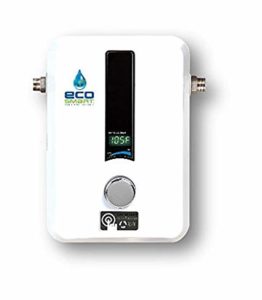 PRO: They’re compact
Newer tank-type water heaters have grown bigger as federal regulations now require thicker insulation to reduce standby heat loss. So they may not be able to fit into spaces where an old heater of the same capacity could go. Tankless gas heaters are about the size of a suitcase and hang on the wall.
PRO: They’re safer
Unlike a tank-type heater, they won’t spill gallons of water if they spring a leak, or harbor Legionella bacteria, or tip over in an earthquake. And because the air-supply and exhaust vents are sealed, carbon monoxide can’t leak into the house due to backdrafting.
PRO: They’re easy to winterize
Owners of vacation homes know well how long it takes to drain a water-heater tank before closing up a house for the winter. A tankless heater takes a few seconds to drain; then you just unplug it.
CON: They’re sensitive to slow flow
If there’s too much scale buildup in the pipes, or faucet and showerhead aerators are clogged, or a turned-down faucet reduces water flow to about 0.3 gpm, these units automatically shut off.
CON: The payback takes awhile
Compared with a tank-type heater costing $400 or so, a $1,000 tankless gas heater may save a household only about $100 per year, depending on how efficient it is and how much hot water is used. But because these tankless gas units last longer, the savings kicks in after six years, about when many tanks are nearing their demise.
Tankless technology is constantly improving. Here are some of the latest refinements:
Higher efficiency
Condensing gas heaters can extract up to 96 percent of a fuel’s heat—a 17 percent improvement over first-generation tankless units—thanks to a second heat exchanger that captures much of the exhaust heat before it goes out the vent. They’re about 25 percent more expensive than noncondensing heaters, and they create an acidic condensate that has to be neutralized. If a heater isn’t equipped with a built-in neutralizing cartridge, the installer has to add one.
Instant hot water
Tankless units take about 15 seconds to bring water up to temperature, but you still have to wait for that hot water to arrive at your showerhead or faucet, just as you do with a tank-type heater. When the distance between heater and fixture exceeds 50 feet, look for units with a built-in recirculation pump, which saves water and reduces waiting time. The pump, which can be turned on by a timer, a push button, a motion sensor, a smart speaker, or a smartphone (above), pushes the cold water in the pipes back through the heater. After about a minute, the pump shuts off and you get hot water seconds after opening the tap.
PRO: They’re compact
Newer tank-type water heaters have grown bigger as federal regulations now require thicker insulation to reduce standby heat loss. So they may not be able to fit into spaces where an old heater of the same capacity could go. Tankless gas heaters are about the size of a suitcase and hang on the wall.
PRO: They’re safer
Unlike a tank-type heater, they won’t spill gallons of water if they spring a leak, or harbor Legionella bacteria, or tip over in an earthquake. And because the air-supply and exhaust vents are sealed, carbon monoxide can’t leak into the house due to backdrafting.
PRO: They’re easy to winterize
Owners of vacation homes know well how long it takes to drain a water-heater tank before closing up a house for the winter. A tankless heater takes a few seconds to drain; then you just unplug it.
CON: They’re sensitive to slow flow
If there’s too much scale buildup in the pipes, or faucet and showerhead aerators are clogged, or a turned-down faucet reduces water flow to about 0.3 gpm, these units automatically shut off.
CON: The payback takes awhile
Compared with a tank-type heater costing $400 or so, a $1,000 tankless gas heater may save a household only about $100 per year, depending on how efficient it is and how much hot water is used. But because these tankless gas units last longer, the savings kicks in after six years, about when many tanks are nearing their demise.
Tankless technology is constantly improving. Here are some of the latest refinements:
Higher efficiency
Condensing gas heaters can extract up to 96 percent of a fuel’s heat—a 17 percent improvement over first-generation tankless units—thanks to a second heat exchanger that captures much of the exhaust heat before it goes out the vent. They’re about 25 percent more expensive than noncondensing heaters, and they create an acidic condensate that has to be neutralized. If a heater isn’t equipped with a built-in neutralizing cartridge, the installer has to add one.
Instant hot water
Tankless units take about 15 seconds to bring water up to temperature, but you still have to wait for that hot water to arrive at your showerhead or faucet, just as you do with a tank-type heater. When the distance between heater and fixture exceeds 50 feet, look for units with a built-in recirculation pump, which saves water and reduces waiting time. The pump, which can be turned on by a timer, a push button, a motion sensor, a smart speaker, or a smartphone (above), pushes the cold water in the pipes back through the heater. After about a minute, the pump shuts off and you get hot water seconds after opening the tap.
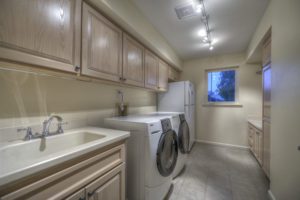 Wi-Fi compatible
Tankless units with digital connectivity let you adjust the temperature and monitor gas and hot-water usage on your phone. More important, the unit can identify the source of a problem. Relay that information to your plumber and he or she can show up knowing exactly what needs to be done. That feature also eliminates any guesswork about when it’s time to descale.
Please note that this Scottsdale Real Estate Blog is for informational purposes and not intended to take the place of a licensed Scottsdale Real Estate Agent. The Szabo Group offers first class real estate services to clients in the Scottsdale Greater Phoenix Metropolitan Area in the buying and selling of Luxury homes in Arizona. Award winning Realtors and Re/MAX top producers and best real estate agent for Luxury Homes in Scottsdale, The Szabo group delivers experience, knowledge, dedication and proven results. Contact Joe Szabo at 480.688.2020, [email protected] or visit www.scottsdalerealestateteam.com to find out more about Scottsdale Homes for Sale and Estates for Sale in Scottsdale and to search the Scottsdale MLS for Scottsdale Home Listings.
Wi-Fi compatible
Tankless units with digital connectivity let you adjust the temperature and monitor gas and hot-water usage on your phone. More important, the unit can identify the source of a problem. Relay that information to your plumber and he or she can show up knowing exactly what needs to be done. That feature also eliminates any guesswork about when it’s time to descale.
Please note that this Scottsdale Real Estate Blog is for informational purposes and not intended to take the place of a licensed Scottsdale Real Estate Agent. The Szabo Group offers first class real estate services to clients in the Scottsdale Greater Phoenix Metropolitan Area in the buying and selling of Luxury homes in Arizona. Award winning Realtors and Re/MAX top producers and best real estate agent for Luxury Homes in Scottsdale, The Szabo group delivers experience, knowledge, dedication and proven results. Contact Joe Szabo at 480.688.2020, [email protected] or visit www.scottsdalerealestateteam.com to find out more about Scottsdale Homes for Sale and Estates for Sale in Scottsdale and to search the Scottsdale MLS for Scottsdale Home Listings.Thinking of a Tankless Water Heater? by Joe Szabo, Scottsdale Real Estate Team
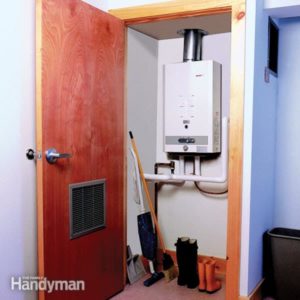 Think about it: The way most households in this country heat water is absurdly wasteful. We fill up big 40- to 50-gallon storage tanks, then pour energy into them 24/7, year in and year out, to make sure we have hot water at the ready whenever we want it. But often it doesn’t work out that way. If a teenager takes a long shower, or a spouse settles in for a tub soak, there can be a long wait for that emptied tank to reheat. Then there are the nagging worries: Is it filled with energy-robbing sediment? Will it spring a leak? Both are reasonable concerns, as tanks generally fail in 8 to 12 years.
These are the arguments for investing in a tankless water heater. It generates hot water only when you need it—and for as long as you need it—saving 27 to 50 percent of fuel costs over tank-type heaters. (A typical gas-fired tank wastes 40 to 50 percent of the fuel it burns.) And because there’s no tank to fail, there’s almost no chance of a catastrophic leak. What’s more, since their introduction in the United States in the 1990s, tankless heaters have become increasingly sophisticated, with features like built-in recirculating pumps (for “instant” hot water), and wireless connectivity that tells you via smartphone exactly when a unit needs maintenance.
HOW MUCH DO THEY COST?
Prices range from about $170 for small gas-fired units to more than $2,000 for high-output heaters that can supply two showers at the same time; $1,000 is about average. Tankless electric heaters run between $90 and $900. First-time installation costs run more than a simple tank replacement. (See slide 9 “Install It Right”)
Think about it: The way most households in this country heat water is absurdly wasteful. We fill up big 40- to 50-gallon storage tanks, then pour energy into them 24/7, year in and year out, to make sure we have hot water at the ready whenever we want it. But often it doesn’t work out that way. If a teenager takes a long shower, or a spouse settles in for a tub soak, there can be a long wait for that emptied tank to reheat. Then there are the nagging worries: Is it filled with energy-robbing sediment? Will it spring a leak? Both are reasonable concerns, as tanks generally fail in 8 to 12 years.
These are the arguments for investing in a tankless water heater. It generates hot water only when you need it—and for as long as you need it—saving 27 to 50 percent of fuel costs over tank-type heaters. (A typical gas-fired tank wastes 40 to 50 percent of the fuel it burns.) And because there’s no tank to fail, there’s almost no chance of a catastrophic leak. What’s more, since their introduction in the United States in the 1990s, tankless heaters have become increasingly sophisticated, with features like built-in recirculating pumps (for “instant” hot water), and wireless connectivity that tells you via smartphone exactly when a unit needs maintenance.
HOW MUCH DO THEY COST?
Prices range from about $170 for small gas-fired units to more than $2,000 for high-output heaters that can supply two showers at the same time; $1,000 is about average. Tankless electric heaters run between $90 and $900. First-time installation costs run more than a simple tank replacement. (See slide 9 “Install It Right”)
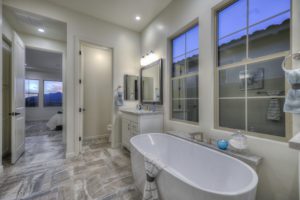 HOW LONG DO THEY LAST?
Gas-burning tankless water heaters should operate for 20 years or more, two or three times longer than tank-type heaters. Tankless electric units have shorter life spans, on the order of 7 to 10 years.
WHERE TO BUY THEM?
Plumbing-supply stores, big-box stores, and online retailers all carry these heaters. Or order one through your plumber.
WHO INSTALLS THEM?
This is definitely a job for a pro, as it involves making leak-free water, vent, and gas connections, in the case of gas or propane units, or upgrading the wiring and circuit-breaker panel, in the case of electric units.
HOW MUCH MAINTENANCE?
Sign up to have a pro provide annual service, including cleaning or changing water and air filters and checking the burner. In areas with hard water, a vinegar flush every 500 hours keeps mineral buildup—scale—from clogging the heat exchanger. That 20-minute task can be done by either a pro or a homeowner.
HOW LONG DO THEY LAST?
Gas-burning tankless water heaters should operate for 20 years or more, two or three times longer than tank-type heaters. Tankless electric units have shorter life spans, on the order of 7 to 10 years.
WHERE TO BUY THEM?
Plumbing-supply stores, big-box stores, and online retailers all carry these heaters. Or order one through your plumber.
WHO INSTALLS THEM?
This is definitely a job for a pro, as it involves making leak-free water, vent, and gas connections, in the case of gas or propane units, or upgrading the wiring and circuit-breaker panel, in the case of electric units.
HOW MUCH MAINTENANCE?
Sign up to have a pro provide annual service, including cleaning or changing water and air filters and checking the burner. In areas with hard water, a vinegar flush every 500 hours keeps mineral buildup—scale—from clogging the heat exchanger. That 20-minute task can be done by either a pro or a homeowner.
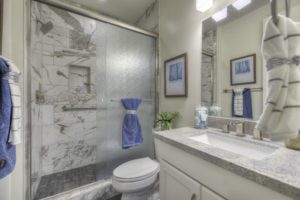 Please note that this Scottsdale Real Estate Blog is for informational purposes and not intended to take the place of a licensed Scottsdale Real Estate Agent. The Szabo Group offers first class real estate services to clients in the Scottsdale Greater Phoenix Metropolitan Area in the buying and selling of Luxury homes in Arizona. Award winning Realtors and Re/MAX top producers and best real estate agent for Luxury Homes in Scottsdale, The Szabo group delivers experience, knowledge, dedication and proven results. Contact Joe Szabo at 480.688.2020, [email protected] or visit www.scottsdalerealestateteam.com to find out more about Scottsdale Homes for Sale and Estates for Sale in Scottsdale and to search the Scottsdale MLS for Scottsdale Home Listings.
Please note that this Scottsdale Real Estate Blog is for informational purposes and not intended to take the place of a licensed Scottsdale Real Estate Agent. The Szabo Group offers first class real estate services to clients in the Scottsdale Greater Phoenix Metropolitan Area in the buying and selling of Luxury homes in Arizona. Award winning Realtors and Re/MAX top producers and best real estate agent for Luxury Homes in Scottsdale, The Szabo group delivers experience, knowledge, dedication and proven results. Contact Joe Szabo at 480.688.2020, [email protected] or visit www.scottsdalerealestateteam.com to find out more about Scottsdale Homes for Sale and Estates for Sale in Scottsdale and to search the Scottsdale MLS for Scottsdale Home Listings.Arizona Winter Chilly Solutions by Joe Szabo, Scottsdale Real Estate Team
 As the temperatures slowly begin to drop, there are a few easy things every homeowner can do to keep their home warm and cozy during the colder months of the year. Plus, these easy-to-implement tips will help you consume less energy and save money on your power bills.
As the temperatures slowly begin to drop, there are a few easy things every homeowner can do to keep their home warm and cozy during the colder months of the year. Plus, these easy-to-implement tips will help you consume less energy and save money on your power bills.
Protect Against Drafts
A home that’s drafty is not only a home that’s uncomfortable, it’s a home that’s losing energy. Research conducted by the U.S. Department of Energy shows that stopping drafts around doors and windows can reduce energy costs for a home by as much as 30%. To make your home draft-free, grab some weather stripping and caulk and seal any open areas around window frames and doors. You can also add layered drapes to your windows to block out the cold. If you feel drafts creeping in under doors, try using a door sweep. Rubber weather stripping is also a great choice that helps block drafts around doors. Don’t forget to come up with a solution for the exit door to your garage or the hatch for your attic.Seal Air Ducts
Any wire, pipe, or duct that goes into your wall, floor, or ceiling could be wasting energy. Plumbing vents are often guilty as well, because they typically run below the floor and through the roof. You can seal them yourself with weather stripping or caulking, or call Day & Night Air and let us take care of it for you.Reverse Ceiling Fan Direction
Do you have ceiling fans in your home? If so, take a few minutes to flip the switches on the fans to make them run in reverse. In summer, you want to blow air downward to cool the room. Warm air rises, so in winter you want to recirculate that warmer air to the lower parts of the room and ceiling fans blowing in reverse will do just that. Keep your fans running on a low speed setting to help lift the chill from the room. Please note that this Scottsdale Real Estate Blog is for informational purposes and not intended to take the place of a licensed Scottsdale Real Estate Agent. The Szabo Group offers first class real estate services to clients in the Scottsdale Greater Phoenix Metropolitan Area in the buying and selling of Luxury homes in Arizona. Award winning Realtors and Re/MAX top producers and best real estate agent for Luxury Homes in Scottsdale, The Szabo group delivers experience, knowledge, dedication and proven results. Contact Joe Szabo at 480.688.2020, [email protected] or visit www.scottsdalerealestateteam.com to find out more about Scottsdale Homes for Sale and Estates for Sale in Scottsdale and to search the Scottsdale MLS for Scottsdale Home Listings.Creative Outdoor Fireplace Ideas by Joe Szabo, Scottsdale Real Estate Team
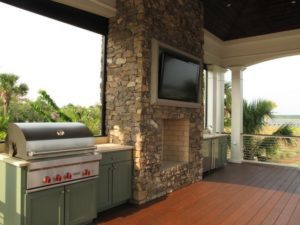 These outdoor fireplaces are full of inspiration to help you create a charming, relaxing getaway in your own backyard. This natural stone outdoor fireplace and forest-like color scheme bring the outdoors into the porch and creates an inviting space for lounging on cool fall evenings. Building a freestanding outdoor fireplace creates an instant cozy gathering place for fall.
Decorate the mantle with a row of tea lights for extra sparkle when the sun goes down.For year-round lounging, there’s an enclosed sitting area that boasts candle chandeliers and a fireplace. Filling the fireplace with candles instead of firewood gives this small seating area a very romantic feel.
These outdoor fireplaces are full of inspiration to help you create a charming, relaxing getaway in your own backyard. This natural stone outdoor fireplace and forest-like color scheme bring the outdoors into the porch and creates an inviting space for lounging on cool fall evenings. Building a freestanding outdoor fireplace creates an instant cozy gathering place for fall.
Decorate the mantle with a row of tea lights for extra sparkle when the sun goes down.For year-round lounging, there’s an enclosed sitting area that boasts candle chandeliers and a fireplace. Filling the fireplace with candles instead of firewood gives this small seating area a very romantic feel. 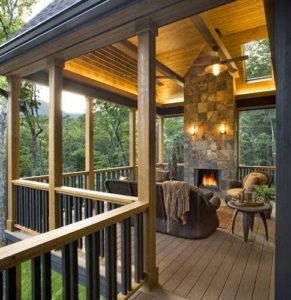 A wood-burning outdoor fireplace is the center of attention in this porch, and dozing, reading, and chatting are the orders of the day. An indoor-outdoor rug softens and defines the gathering space.
The brick in a courtyard and outdoor fireplace can come from old buildings that were torn down. The biggest issue with antique brick is there are several different sizes and it tends to get mixed up. You can set the brick in sand, rather than concrete, to give a relaxed and aged look. Plus, the sand helped level odd-size bricks.
Here are more beautiful outdoor fireplace areas to get your creative juices flowing!
A wood-burning outdoor fireplace is the center of attention in this porch, and dozing, reading, and chatting are the orders of the day. An indoor-outdoor rug softens and defines the gathering space.
The brick in a courtyard and outdoor fireplace can come from old buildings that were torn down. The biggest issue with antique brick is there are several different sizes and it tends to get mixed up. You can set the brick in sand, rather than concrete, to give a relaxed and aged look. Plus, the sand helped level odd-size bricks.
Here are more beautiful outdoor fireplace areas to get your creative juices flowing! 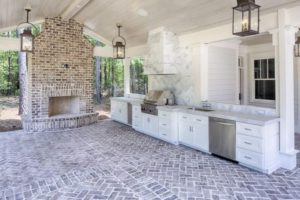 Please note that this Scottsdale Real Estate Blog is for informational purposes and not intended to take the place of a licensed Scottsdale Real Estate Agent.
Please note that this Scottsdale Real Estate Blog is for informational purposes and not intended to take the place of a licensed Scottsdale Real Estate Agent.
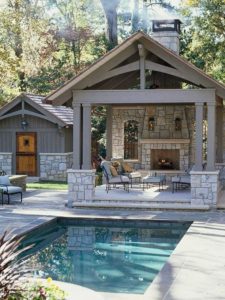 The Szabo Group offers first class real estate services to clients in the Scottsdale Greater Phoen
ix Metropolitan Area in the buying and selling of Luxury homes in Arizona. Award winning Realtors and Re/MAX top producers and best real estate agent for Luxury Homes in Scottsdale, The Szabo group delivers experience, knowledge, dedication and proven results. Contact Joe Szabo at 480.688.2020, [email protected] or visit www.scottsdalerealestateteam.com to find out more about Scottsdale Homes for Sale and Estates for Sale in Scottsdale and to search the Scottsdale MLS for Scottsdale Home Listings.
The Szabo Group offers first class real estate services to clients in the Scottsdale Greater Phoen
ix Metropolitan Area in the buying and selling of Luxury homes in Arizona. Award winning Realtors and Re/MAX top producers and best real estate agent for Luxury Homes in Scottsdale, The Szabo group delivers experience, knowledge, dedication and proven results. Contact Joe Szabo at 480.688.2020, [email protected] or visit www.scottsdalerealestateteam.com to find out more about Scottsdale Homes for Sale and Estates for Sale in Scottsdale and to search the Scottsdale MLS for Scottsdale Home Listings.
Caring for your Wood Fireplace by Joe Szabo, Scottsdale Real Estate Team
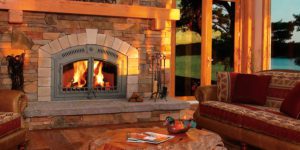 Who doesn’t love a nice, warm fire in the fireplace during the cold weather months? There can be many advantages to a wood burning fireplace, including saving money on heating costs and supplementing your main source of heat. At the same time, maintenance and service of your fireplace is of utmost importance. Some homeowners may not be aware of the exposures associated with fireplaces and chimneys until it’s too late and becomes a very costly repair.
To help you avoid the risk of a chimney fire, here are ten tips for wood-burning fireplace maintenance courtesy of DIY Network2:
Who doesn’t love a nice, warm fire in the fireplace during the cold weather months? There can be many advantages to a wood burning fireplace, including saving money on heating costs and supplementing your main source of heat. At the same time, maintenance and service of your fireplace is of utmost importance. Some homeowners may not be aware of the exposures associated with fireplaces and chimneys until it’s too late and becomes a very costly repair.
To help you avoid the risk of a chimney fire, here are ten tips for wood-burning fireplace maintenance courtesy of DIY Network2:
- Have your wood burning fireplace inspected and cleaned by a professional chimney sweep at least once a year and more often if creosote builds up on the chimney walls rapidly. Depending on where you live, this can cost anywhere from $100 to $200.
- Between professional inspections and cleanings, monitor your wood burning fireplace for signs of buildup or other problems.
- Your chimney has a cap with open sides usually covered with mesh to keep rain, birds, squirrels, other animals, and debris from entering the chimney. The cap should be inspected regularly and replaced when necessary.
- Check the interior of your wood burning fireplace’s chimney for creosote buildup.
- Also watch for soot buildup in the chimney of your wood burning fireplace. Soot is softer than creosote, flammable, and should be cleaned out of the chimney regularly.
- If possible, burn hardwoods like maple, oak, ash, and birch. The advantages of hardwoods are that they burn hot and long, have less pitch and sap, and tend to cause less creosote buildup. On the other hand, they generally are more expensive than softwoods.
- Anytime there is smoke indoors from your wood burning fireplace, troubleshoot and immediately correct any problems that you find. Possible causes of smoke are a dirty chimney with creosote or soot buildup, other debris in the chimney, a damper that isn’t open or is only partly open, or wood that is not burning completely.
- To ensure wood burning fireplace safety, consider installing a stainless steel liner that will withstand even the highest temperatures and will keep the fire and its embers contained.
- To improve your wood burning fireplace’s efficiency, consider installing heat-proof glass doors to protect against heat loss and a fan or blower to direct the heat into the room. Doors are also a safety feature, since they can keep live embers from escaping the fireplace into the interior of the home. Glass doors should be cleaned regularly with a paper towel and glass fireplace door cleaner.
- Clean your wood burning fireplace’s interior, including its floor, regularly. Sweep out or vacuum up cold ashes. Wear a dust mask and gloves when cleaning the fireplace. Please note that this Scottsdale Real Estate Blog is for informational purposes and not intended to take the place of a licensed Scottsdale Real Estate Agent. The Szabo Group offers first class real estate services to clients in the Scottsdale Greater Phoenix Metropolitan Area in the buying and selling of Luxury homes in Arizona. Award winning Realtors and Re/MAX top producers and best real estate agent for Luxury Homes in Scottsdale, The Szabo group delivers experience, knowledge, dedication and proven results. Contact Joe Szabo at 480.688.2020, [email protected] or visit www.scottsdalerealestateteam.com to find out more about Scottsdale Homes for Sale and Estates for Sale in Scottsdale and to search the Scottsdale MLS for Scottsdale Home Listings.
What You Need to Know about Wood Fireplaces by Joe Szabo, Scottsdale Real Estate Team
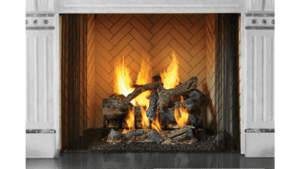 There’s nothing like the crackle and pop of a nice warm fire on a cold evening. If you’re lucky enough to have a fireplace in your home, you know how wonderful they can be. You also know how much maintenance they can take to operate properly and stay clean. Most people feel the benefits outweigh the disadvantages. If you don’t already have a wood burning fireplace, you may be interested in learning where you can find fireplaces for sale or how to go about installing wood fireplace inserts.
Either way, we’re here to talk about everything related to wood fireplaces so you can make the best decision possible.
First, what it is? Essentially, a standard, wood-burning fireplace comprises a hearth (which is basically the floor in front of the fireplace), the firebox (where the wood burns), the damper (the lever that opens and closes the flue) and the smoke chamber and flue (where the smoke is drawn up and out). It’s important to only use seasoned wood in your fireplace, as it gives the most effective fire with the least amount of smoke and creosote buildup.
There’s nothing like the crackle and pop of a nice warm fire on a cold evening. If you’re lucky enough to have a fireplace in your home, you know how wonderful they can be. You also know how much maintenance they can take to operate properly and stay clean. Most people feel the benefits outweigh the disadvantages. If you don’t already have a wood burning fireplace, you may be interested in learning where you can find fireplaces for sale or how to go about installing wood fireplace inserts.
Either way, we’re here to talk about everything related to wood fireplaces so you can make the best decision possible.
First, what it is? Essentially, a standard, wood-burning fireplace comprises a hearth (which is basically the floor in front of the fireplace), the firebox (where the wood burns), the damper (the lever that opens and closes the flue) and the smoke chamber and flue (where the smoke is drawn up and out). It’s important to only use seasoned wood in your fireplace, as it gives the most effective fire with the least amount of smoke and creosote buildup.
PROS OF WOOD FIREPLACES
From operation costs to ambiance, there are several advantages to using a wood burning fireplace. Let’s take a look at a few of them:- The net fuel cost is cheaper than heating oil, natural gas or coal.
- You can purchase wood locally and support community business.
- Wood is widely available.
- Wood is renewable and sustainable.
- The price of wood is relatively stable.
- Wood emits fewer pollutants into the air.
- It provides a natural ambiance reminiscent of the outdoors.
CONS OF WOOD FIREPLACES
Fireplaces have their negative sides, too:- Wood burning fireplaces and stoves emit smoke and soot. Without annual cleaning of your chimney, that buildup can pose a danger.
- You have to buy or chop your own wood and store it in a dry place.
- You can’t leave a fire unattended. Even warm ash can re-ignite.
- Traditional wood burning fireplaces aren’t very efficient. If you add an insert, you can improve that efficiency somewhat.
- Fires take some time to build and must be constantly stoked before they die out.
Your Guide to Wireless Speaker in your Home Theatre by Joe Szabo, Scottsdale Real Estate Team
What a Loudspeaker Needs to Create Sound
- First, speakers need to access the music or movie soundtrack. This is provided in the form of electrical impulses (the audio signal).
- Second, in order for the speaker to take the electrical sound impulses and convert those impulses into an actual sound that you can hear, the speaker needs to be physically connected to an amplifier, which can be powered either by a battery (most applicable for portable devices) or AC power.
Wireless Home Theater Speaker Requirements
:max_bytes(150000):strip_icc():format(webp)/wireless-speakers-and-home-theater-1846770-Final-5c45eeeec9e77c000175e978.png)
When Wireless Is Not Really Wireless
The Sonos Option For Wireless Surround Speakers
The DTS Play-Fi, Denon HEOS, and Yamaha MusicCast Wireless Surround Speaker Solutions
Wireless Subwoofers
The WiSA Factor
The Damson Option
The Bottom Line
Designing Your Ideal Home Office by Joe Szabo, Scottsdale Real Estate Team
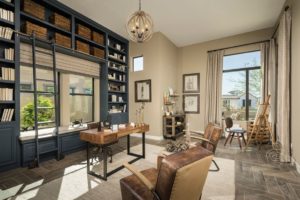 Whether your home office is designated space for running a business, the occasional telecommute, or simply a nook for paying bills and organizing your schedule, you deserve more than a metal desk and extra chair stuffed into a spare corner. Why? An office that reflects the design and comfort of the rest of your home is a place you’ll want to burn the midnight oil. Here are 10 tips for creating a charming, practical work space.1. Location, location, location. You’ll likely spend many hours in your home office, so don’t stiff yourself on space (e.g. squishing a tiny desk into a windowless closet to preserve the rarely-used guest room). Also consider traffic flow and your ability to withstand distractions. Do you work best in the thick of activity, or should your office be tucked away in a quiet space? If clients will be stopping by, a private space with ample seating is a must.2. Don’t sacrifice form for function. Your desk, shelves, and storage should serve you, not the other way around. Consider your workflow and what items you need at your fingertips before investing in furniture, and then look for pieces that are both beautiful and functional. Home office furniture should complement other rooms in your house instead of screaming “soulless cubicle.” If your home has traditional décor, warm wood and soft, comfy chairs or a loveseat are ideal if you have the space. A contemporary home office can feature artistic pieces or modern metal furniture.
3. Invest in a great chair. You spend hours parked in your office chair; a beautiful, ergonomically-correct, comfortable seat is worth every dime.
Whether your home office is designated space for running a business, the occasional telecommute, or simply a nook for paying bills and organizing your schedule, you deserve more than a metal desk and extra chair stuffed into a spare corner. Why? An office that reflects the design and comfort of the rest of your home is a place you’ll want to burn the midnight oil. Here are 10 tips for creating a charming, practical work space.1. Location, location, location. You’ll likely spend many hours in your home office, so don’t stiff yourself on space (e.g. squishing a tiny desk into a windowless closet to preserve the rarely-used guest room). Also consider traffic flow and your ability to withstand distractions. Do you work best in the thick of activity, or should your office be tucked away in a quiet space? If clients will be stopping by, a private space with ample seating is a must.2. Don’t sacrifice form for function. Your desk, shelves, and storage should serve you, not the other way around. Consider your workflow and what items you need at your fingertips before investing in furniture, and then look for pieces that are both beautiful and functional. Home office furniture should complement other rooms in your house instead of screaming “soulless cubicle.” If your home has traditional décor, warm wood and soft, comfy chairs or a loveseat are ideal if you have the space. A contemporary home office can feature artistic pieces or modern metal furniture.
3. Invest in a great chair. You spend hours parked in your office chair; a beautiful, ergonomically-correct, comfortable seat is worth every dime.





